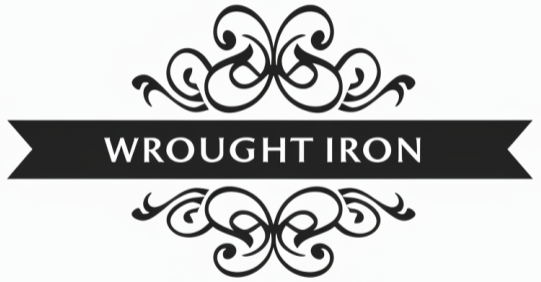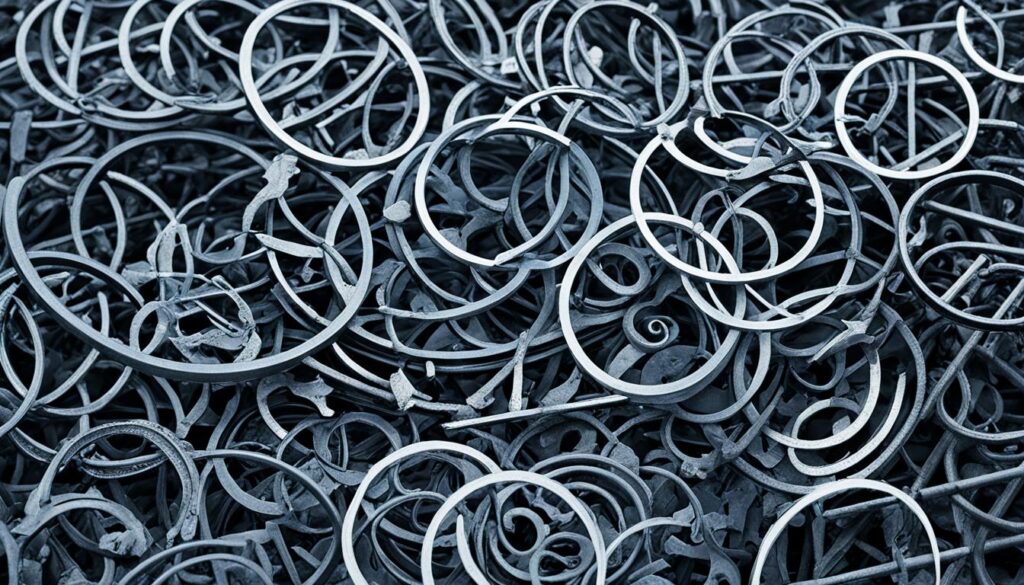
Isn’t it fascinating how some materials last for centuries, keeping their value and charm? Wrought iron is one such material. It’s found in things like antique gates and durable railings that line our homes. Since the 1800s, wrought iron has been a favorite for building and making things. It’s also fully recyclable, making it a green choice.
Knowing that almost 86% of wrought iron from vehicles can be recycled is hopeful1. Recycling wrought iron is good for your wallet and the planet. In the UK, over 10 million tonnes of metal are recycled every year2. Using recycled steel cuts down on pollution a lot.
In the U.S., recycling is encouraged by laws to lower our carbon footprint. Recycling wrought iron also helps reduce the need for mining iron ore. This mining is bad for the environment3. Recycling wrought iron has many benefits for our wallets and the planet.
Key Takeaways
- Wrought iron is infinitely recyclable without quality loss.
- About 86% of vehicle materials can be recycled1.
- Recycling steel reduces air pollution by 86% and water pollution by 76%2.
- Over 10 million tonnes of metal are recycled each year in the UK2.
- Responsible wrought iron recycling can significantly reduce environmental impacts3.
Understanding Wrought Iron: Characteristics and Common Uses
Wrought iron is known for its wrought iron characteristics, like being very strong and easy to shape. It’s made mostly of iron, which makes it a solid choice for many uses4. It’s different from cast iron because it has less carbon, which affects its strength and flexibility4. Wrought iron also has small slag pieces that make it look like wood when it’s etched or rusted45.
Wrought iron is often used to make decorative items. It can be heated and shaped many times without breaking, which is very useful5. This lets artists make detailed designs for both looks and function. Back in the 1860s, it was key for making warships and parts for trains, with the UK producing 4 million tons a year by 18764.
Today, wrought iron is a top choice in the building industry for its strength and flexibility. It’s great for making gates, fences, and railings because it doesn’t rust easily, thanks to the slag content5. But, it’s important to treat it right to stop rust from forming.
Even though making wrought iron has slowed down because of environmental concerns, its unique traits and looks keep it popular. Its history, current uses, and ongoing appeal show why it’s still a top pick for certain designs in buildings and more. Knowing about these wrought iron characteristics helps us see its value and lasting appeal.
Environmental Impact of Wrought Iron Production
The production of wrought iron uses blast furnaces to melt iron ore. This process is energy-intensive and emits pollutants, affecting the environment6. Traditional methods lead to air and water pollution, making iron ore mining a big environmental issue6. Yet, using sustainable methods for wrought iron can cut down on emissions more than using concrete or plastic7. Plus, many wrought iron items come from recycled scrap iron, which means less mining and less environmental harm8.
Recycled wrought iron is key to reducing environmental harm. It’s fully recyclable, so it can be melted and reused, cutting down on landfill waste and saving resources8. Using recycled iron also helps preserve the metal’s quality and reduces the need for new ore, lowering pollution78. Buying wrought iron from local suppliers also helps local communities and cuts down on shipping emissions78.
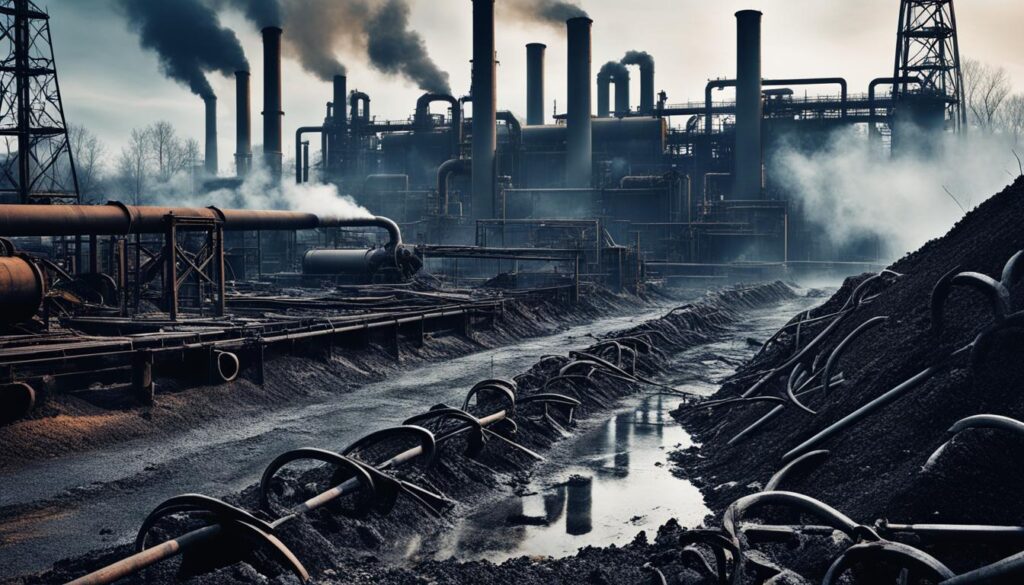
Steelmaking processes like Basic Oxygen Steelmaking (BOS) and Electric Arc Furnace (EAF) use a lot of recycled steel and produce quality steel with less carbon6. These methods lessen environmental harm by reducing air pollution, waste, and water pollution6. BOS and EAF ensure the steel meets environmental standards, leading to fewer emissions and a smaller carbon footprint6.
Wrought iron products also have environmental benefits. For example, wrought iron fences and gates are durable and look good. They help reduce air pollution by needing fewer replacements and help keep homes energy-efficient with their insulation properties8. Through recycling and new manufacturing methods, the environmental impact of wrought iron is greatly reduced.
Is Wrought Iron Recyclable: Everything You Need to Know
Wrought iron is a sustainable choice because it can be recycled. Yes, wrought iron can be recycled. It’s soft and easy to shape with tools like hammers and drills9. This makes it strong when reworked multiple times9. So, recycling it makes it even stronger and more durable.
Recycling wrought iron saves natural resources and cuts down on environmental harm10. Before recycling, check the condition of the wrought iron to pick the right recycling method10. Items like gates, fencing, and patio furniture can be recycled9
Many recycling centers take wrought iron for melting and reusing10. In Indianapolis, go to a trusted recycling center to follow the law and get paid fairly9. Garden City Iron & Metal is a top choice for recycling in Indianapolis, known for professionalism and good pay9.
Recycling wrought iron also brings in money, thanks to its scrap value. Scrap metal prices change, so check them before recycling10. This makes recycling wrought iron a smart choice for the planet and your wallet. Yes, wrought iron is recyclable and good for both the environment and your wallet.
| Aspect | Details |
|---|---|
| Recyclability | Can be reheated and reformed multiple times |
| Common Items | Gates, fencing, patio furniture, railing, chairs, spindles, benches, wall art, home décor, and grills |
| Environmental Impact | Reduces need for new material production, conserves resources, and lowers environmental impact |
| Economic Incentive | Potential financial gain from scrap metal recycling; fluctuating prices |
| Recycling Centers | Many centers and dealers accept wrought iron; Garden City Iron & Metal in Indianapolis |
The Iron Recycling Process: From Collection to New Products
The iron recycling process starts with collecting wrought iron scrap from many places. It turns this scrap into new products. This method is good for the planet and saves resources.
Collection of Wrought Iron Scrap
First, we collect wrought iron scrap. We get it from tearing down buildings, leftover materials from making things, and old household items. Only 30% of metal is recycled now, so we need to collect more11. People can make money by bringing scrap metal to recycling centers11.
Processing and Melting Wrought Iron
After collecting, we process and melt the iron. Making new metal from recycled iron is cheaper than from raw ore12. The melted iron is cleaned and turned into raw material for new items. Recycling also lowers production costs, which helps consumers save money11.
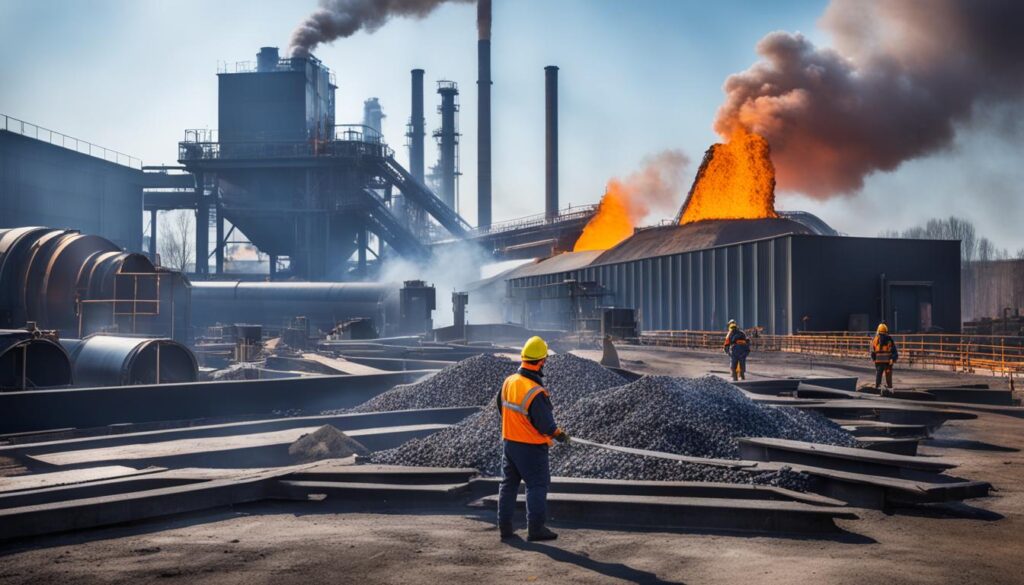
Creating New Recycled Wrought Iron Products
Then, we make new products from the clean iron. This process saves natural resources and uses less energy than mining11. It also cuts down on harmful gases and carbon dioxide emissions11. Plus, recycling creates jobs, boosting the economy11.
| Metal | Price per Unit ($) |
|---|---|
| Steel | 0.50 to 1.30 |
| Aluminum | 0.65 to 1.07 |
| Copper | 2.13 to 2.43 |
| Stainless Steel | 0.32 to 1.64 |
| Brass | 1.59 to 1.76 |
| Lead | 0.41 to 0.73 |
Exploring Wrought Iron Recycling Facilities in the US
Finding wrought iron recycling facilities in the United States is important. It’s key to know where to look and what certifications to check for. These places are crucial for recycling wrought iron scrap safely and following environmental rules.
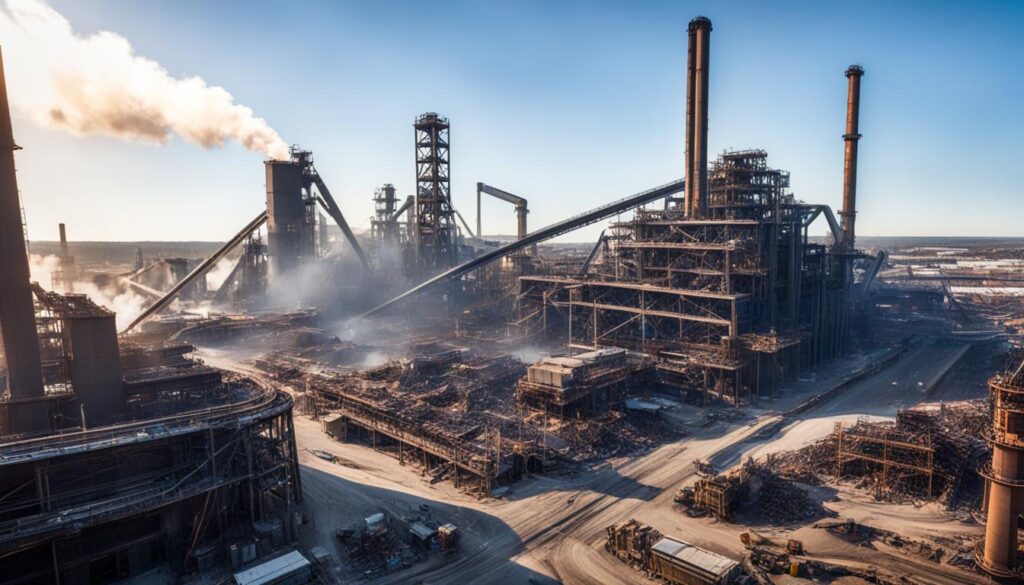
Finding Certified Recycling Centers
Certified recycling centers are key for recycling wrought iron well. They follow strict rules on metal recycling set by states. This ensures recycling is safe and good for the environment. In 2018, the U.S. recycled 3.7 million tons of aluminum, saving enough energy to power 8 million homes13. Steel, the most recycled material worldwide, benefits from these centers too13. Finding a certified center can greatly increase the value of your scrap metal.
State Regulations on Wrought Iron Certain Recycling
State rules on metal recycling help handle wrought iron responsibly. They prevent harm to the environment and make recycling more valuable. States have strict rules for facilities, leading to high recycling rates and saving energy. Recycling steel saves a lot of energy and cuts down on mining, which saves natural resources1314. It’s vital to follow these rules for safe and effective wrought iron recycling in the U.S.
Conclusion
Wrought iron is not just beautiful; it’s also good for the planet. By recycling it, we save iron ore, a limited resource15. This helps cut down on energy use and lowers harmful emissions15. Plus, recycling iron turns old items into new ones, reduces landfill waste, and boosts the economy15.
The iron recycling industry grows stronger with more people joining in. Most of the scrap steel recycled worldwide is made up of iron types like steel and wrought iron16. In the US, steel makes up half of all recycled metals, showing how crucial recycling is17. Recycling metals like aluminum and copper also brings big environmental and economic benefits16.
Having recycling centers that follow strict rules helps the iron recycling industry in the US. Using recycled wrought iron shows we value history and care for the planet. By supporting recycling, we’re helping create a future where recycling is the norm. This makes wrought iron recycling a key part of being eco-friendly and smart financially.
FAQ
Is wrought iron recyclable?
What are the environmental benefits of recycling wrought iron?
How does wrought iron recycling contribute to sustainability?
What are some common characteristics of wrought iron?
What are the common uses of wrought iron?
What is the environmental impact of producing wrought iron?
How does recycling wrought iron help reduce air pollution?
What are the benefits of recycling wrought iron scrap?
What is the process of collecting wrought iron scrap?
What happens during the processing and melting of wrought iron scrap?
What are some recycled wrought iron products?
How can I find certified wrought iron recycling facilities in the US?
What are the state regulations on wrought iron recycling?
Source Links
- Acceptable Items for Recycling – Austin Metal and Iron – https://austinmetalandiron.com/acceptable-items-for-recycling
- What different types of metal can be recycled? – https://wastemission.com/blog/what-types-of-metal-can-be-recycled/
- Gardner Metal Recycling – https://www.gardnermetals.com/can-iron-be-recycled/
- Wrought iron – https://en.wikipedia.org/wiki/Wrought_iron
- wrought iron facts | Garden City Iron & Metal – https://www.gardencityironandmetal.com/blog/tag/wrought-iron-facts/
- HOW STEEL PRODUCTION OF ENVIRONMENTAL IMPACT? | AM Industries Vietnam – https://aminds.com/how-steel-production-of-environmental-impact/
- Why Wrought Iron Fences Are Environmentally Friendly – Artistic Iron Works – https://artisticiron.com/wrought-iron-fences/
- The environmental benefits of using wrought iron products in your home – Jiuhua Group – https://www.jiuhuagroup.com/the-environmental-benefits-of-using-wrought-iron-products-in-your-home/
- Can I Recycle Wrought Iron? – https://www.gardencityironandmetal.com/blog/can-i-recycle-wrought-iron/
- How to Dispose of a Wrought Iron Fence: Quick Guide – EZ CleanUp – https://ezcleanup.com/how-to-dispose-of-wrought-iron-fence/
- How Is Metal Recycled? Your Guide to the Process of Metal Recycling – https://glescrap.com/blog/recycling-firms-process-scrap-metal-goes-sold-manufacturers/
- Recycling – Ferrous Metals, Reuse, Upcycling – https://www.britannica.com/science/recycling/Ferrous-metals
- Metal Recycling 101: Everything You Need To Know – https://greencitizen.com/blog/metal-recycling/
- Facts About the Metal Recycling Process – https://www.dawsonrecyclinganddisposalinc.com/facts-about-the-metal-recycling-process-1
- What Can You Do With Old Iron? – Leinster Metal Recycling – https://leinstermetalrecycling.ie/what-can-you-do-with-old-iron/
- Can Metals Be Recycled? | Metal Supermarkets – https://www.metalsupermarkets.com/can-metals-be-recycled/
- The Basics of Recycling Scrap Metal | Accurate Recycling Corp. – https://accuraterecycling.com/blog/the-basics-of-recycling-scrap-metal/
